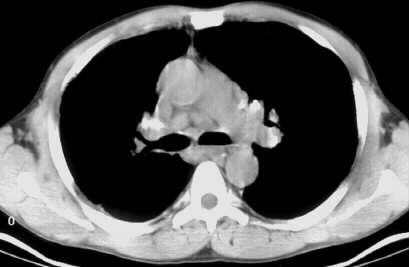Sarcoidosis is a granulomatous
multi-system disease of unknown etiology.
It usually affects
younger no middle aged, with a the disease being more severe in African blacks.
The typical
histopathological picture is non-caseating
granulomas, with heroes the presence of epitheliod cells, T lymphocytes
and macrophages.
Commonly affected
organs are the lungs, skin, and eyes.
Symptoms of lung
disease are non-productive cough and dyspnea. Cor pulmonale may develop.
There may be pulmonary
infiltrates, an less commonly pulmonary fibrosis.
Chest examination is
usually normal. Fine crepitations may be present. Finger clubbing is rare , and
if present it should raise the suspicion of an alternative diagnosis.
The triad of
arthralgias, bihilar lymphadenopathy, and erythema nodosum is known as
Löfgren’s sindrome.
Diagnosis is suggested
by symptoms and signs. Biopsy from enlarged lymph nodes, skin, or
transbronchial biopsy are indicated.
Pulmonary function
tests help assess the disease severity and to monitor response to treatment.
Abnormalities may be a restrictive lung defect with decrease in gas transfer.
Serum
angiotensin-converting enzyme (ACE) is usually raised, but it has low
specificity, and is not of diagnostic value.
Treatment is not
indicated with normal lung parenchyma (even if there is hilar lymphadenopathy),
and pulmonary function tests.
Patients with affected
lung parenchyma or abnormal pulmonary function tests require treatment with
oral Prednisolone (30 mg) for 6 weeks and then tapered to a low maintenance
dose for six months to one year.
Prednisolone is also
indicated for other organs involvement.
Alternatively,
methotrexate, cyclophosphamide, or azathioprine, may be used in patients
needing long term steroid therapy.
The prognosis is
better in Caucasians , than in African blacks , and the cause of death is
mainly respiratory failure.


No comments:
Post a Comment